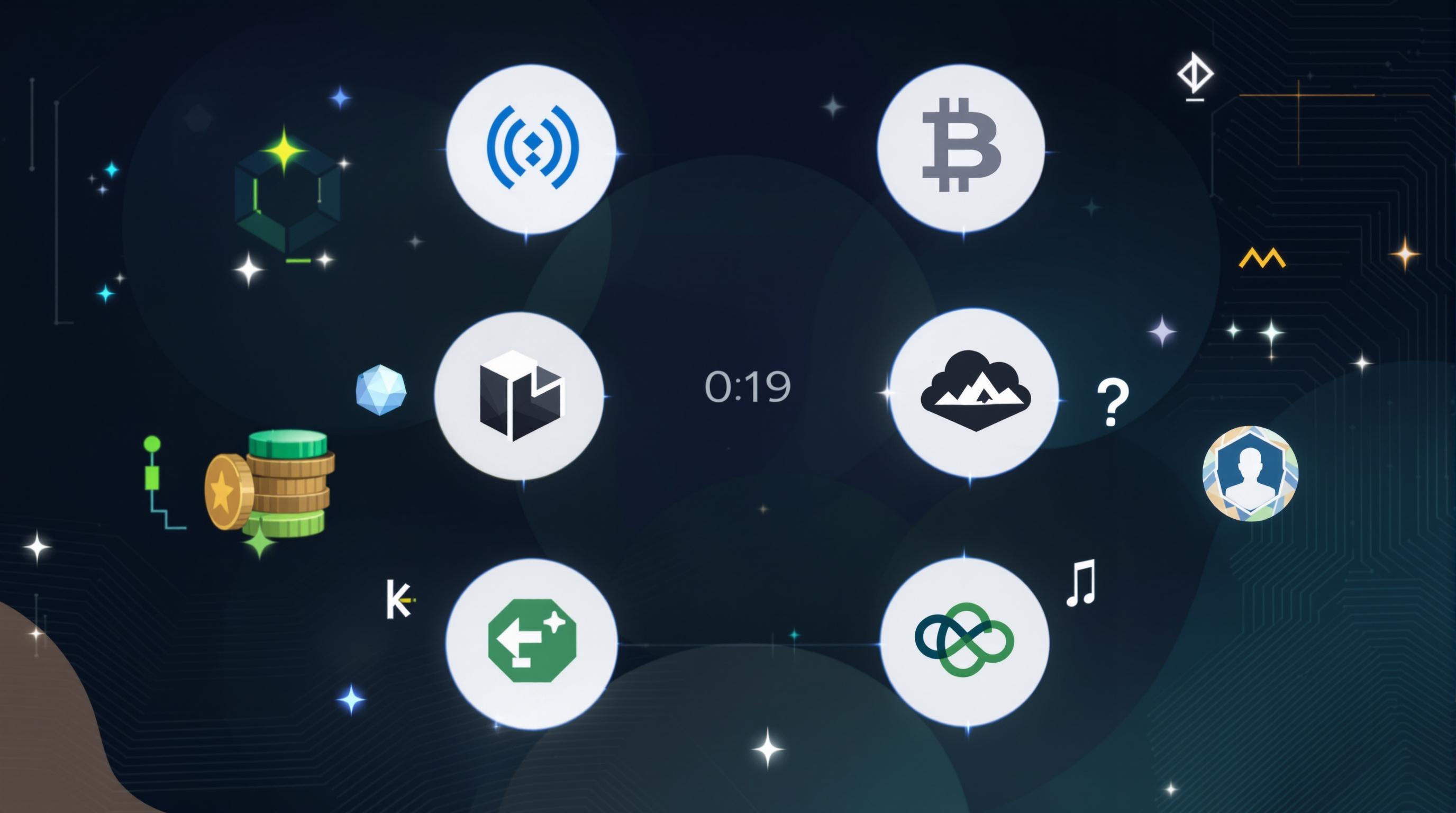Related Articles
- 7 Game-Changing Encrypted Messaging Apps Released Since 2019 That Redefine User Control
- Exploring Quantum Entanglement as a Future Layer of Protection for Connected Devices in Decentralized Networks
- Top 7 Privacy-Focused Cloud Backup Services Released Since 2019 That Redefine Data Control
- Exploring Psychological Barriers That Prevent Wider Adaptation of Dual Verification in Everyday Tech Use
- Top 6 Privacy-Focused Browsers from the Last Five Years That Outpace Giants in Speed and Security
- 6 Lesser-Known Identity Protection Gadgets From the Last Five Years That Actually Outperform Popular Brands
Top 8 Next-Gen Platforms Released Since 2019 for Ironclad Digital Safety: Comprehensive Ranking & Reviews
Top 8 Next-Gen Platforms Released Since 2019 for Ironclad Digital Safety: Comprehensive Ranking & Reviews
Top 8 Next-Gen Platforms Released Since 2019 for Ironclad Digital Safety: Comprehensive Ranking & Reviews
Introduction to Next-Gen Digital Safety Platforms
The digital world continues to evolve rapidly, and so does the threat landscape. Since 2019, several next-generation platforms have emerged, designed to provide ironclad digital safety for individuals and businesses alike. These platforms utilize advanced technologies such as AI-driven threat detection, zero-trust models, and automated response tactics to safeguard against increasingly sophisticated cyber threats.
Understanding the capabilities, strengths, and weaknesses of these platforms is essential for users looking to secure their digital environments effectively. This article presents a comprehensive ranking and review of the top 8 next-gen digital safety platforms released since 2019, highlighting what sets each apart in a crowded marketplace.
The criteria for ranking include innovation, user interface, integration capabilities, threat detection accuracy, and customer support. Insights are drawn from industry reports and user reviews to provide an objective perspective.
1. SentinelOne Singularity Platform
Launched in late 2019, SentinelOne’s Singularity Platform offers real-time autonomous endpoint protection powered by AI. It emphasizes behavioral AI to detect and respond to threats at machine speed, aiming to eliminate the need for manual intervention in threat hunting and response.
What makes SentinelOne stand out is its unified platform combining endpoint detection and response (EDR), extended detection and response (XDR), and threat intelligence. This integration reduces complexity and increases efficiency for IT security teams.
Users report high satisfaction for its ease of deployment and the advanced automated remediation capabilities. However, some have noted that the platform’s pricing is on the higher side, which may be a consideration for small enterprises. (Source: Gartner, 2022)
2. CrowdStrike Falcon Prevent
CrowdStrike Falcon Prevent is a cloud-native endpoint protection platform released with major upgrades from 2019 onwards. Known for its powerful AI-driven threat detection combined with minimal system resource use, it is preferred by enterprises that value speed and scalability.
The Falcon platform integrates antivirus, endpoint detection, and threat intelligence feeds to create a comprehensive security shield. Its real-time streaming analytics enable early identification of threats and rapid containment, significantly reducing breach impact.
In reviews from cybersecurity professionals, CrowdStrike Falcon is praised for its robust dashboard and seamless integrations with other security tools, though initial setup can be complex for smaller teams. (Source: Forrester Wave, 2023)
3. Microsoft Defender for Endpoint
Microsoft Defender for Endpoint has evolved extensively since 2019, transitioning into a next-gen platform emphasizing zero-trust and integrated threat analytics within the Microsoft ecosystem. It provides endpoint protection, detection, investigation, and response all in one package.
Its integration with other Microsoft products and Azure cloud services makes defending hybrid environments efficient and streamlined. Microsoft leverages its vast telemetry and AI capabilities to preemptively identify zero-day threats.
Many organizations already invested in Microsoft infrastructure find Defender to be a cost-effective and powerful solution. Critics suggest that non-Microsoft environments might see limited integration and benefits. (Source: IDC, 2023)
4. Palo Alto Networks Cortex XDR
Palo Alto Networks Cortex XDR, introduced with major upgrades post-2019, presents itself as an extended detection and response platform integrating endpoint, network, and cloud data to identify threats in depth. It uses machine learning models to analyze behavior patterns and flag anomalies.
The platform offers automated threat hunting and investigation features, significantly accelerating incident response workflows. Integration with Palo Alto’s broader security suite offers additional benefits for organizations seeking a unified security architecture.
Users commend Cortex XDR for its comprehensive visibility and customizable reporting, while some highlight a steep learning curve for optimization. (Source: Cybersecurity Insiders, 2022)
5. Sophos Intercept X
Sophos Intercept X, enhanced substantially since 2019, combines deep learning AI with exploit prevention and active adversary mitigations to prevent threats before they execute. Its focus on early-stage threat disruption makes it a strong candidate for proactive defense.
The platform delivers endpoint detection and response features alongside synchronized security by connecting endpoints with firewalls to automate responses. This ecosystem approach reduces response times and limits lateral movement of attackers.
Sophos is highly regarded for its user-friendly interface and effective ransomware mitigation strategies. Some reviews point out that advanced features might require a higher-tier subscription. (Source: AV-Test, 2023)
6. Bitdefender GravityZone Ultra
Bitdefender GravityZone Ultra is a next-gen platform that enhances traditional endpoint security with advanced detection, risk analytics, and automated response capabilities. Released in its upgraded form post-2019, it is designed to deliver high efficacy in complex enterprise environments.
The platform prides itself on threat lifecycle management, with sophisticated sandboxing technology and global threat intelligence seamlessly integrated. Its modular design allows organizations to tailor security to their exact needs.
Industry analysts note Bitdefender for its strong malware detection rates and ease of management, although some users mention that the dashboard lacks real-time customization flexibility. (Source: SE Labs, 2023)
7. VMware Carbon Black Cloud
VMware Carbon Black Cloud, enhanced since 2019, is built with cloud-native principles offering endpoint protection based on behavioral analytics and big data. Its strength lies in proactive threat hunting and real-time response mechanisms.
By utilizing predictive models, the platform identifies subtle threat vectors and prevents attackers from establishing footholds. VMware’s wide integration capabilities with virtualization and cloud infrastructures make it attractive for hybrid cloud adopters.
Security teams appreciate Carbon Black’s extensive telemetry and threat intelligence, though some report a complex initial learning phase. (Source: Gartner, 2023)
8. Trend Micro Apex One
Trend Micro Apex One has been revamped since 2019 to incorporate AI-enhanced threat detection and automated remediation. It aims to provide a holistic endpoint solution that handles everything from malware detection to vulnerability protection.
Apex One integrates seamlessly with Trend Micro’s deep threat intelligence network, offering predictive capabilities that keep pace with emerging attack methods. Its focus on automation helps reduce the burden on IT security teams and improves response times.
End users praise the platform’s comprehensive protection and centralized management console but note that more frequent updates may be necessary to stay current. (Source: NSS Labs, 2022)
Conclusion: Choosing the Right Platform for Ironclad Digital Safety
As cyber threats continue to grow in complexity and frequency, choosing the right next-generation digital safety platform is crucial. The eight platforms reviewed offer diverse approaches, including AI-driven detection, zero-trust enforcement, and automated response, enabling organizations to strengthen their cybersecurity posture.
Factors such as organizational size, existing infrastructure, budget, and specific security requirements should guide platform selection. For example, enterprises heavily invested in Microsoft products might benefit from Defender for Endpoint, while those seeking advanced behavioral analytics might prefer SentinelOne or Palo Alto Cortex XDR.
Ultimately, continuous evaluation, integration with existing security frameworks, and ongoing threat intelligence updates are essential to maintaining ironclad digital safety in today’s dynamic environment.




